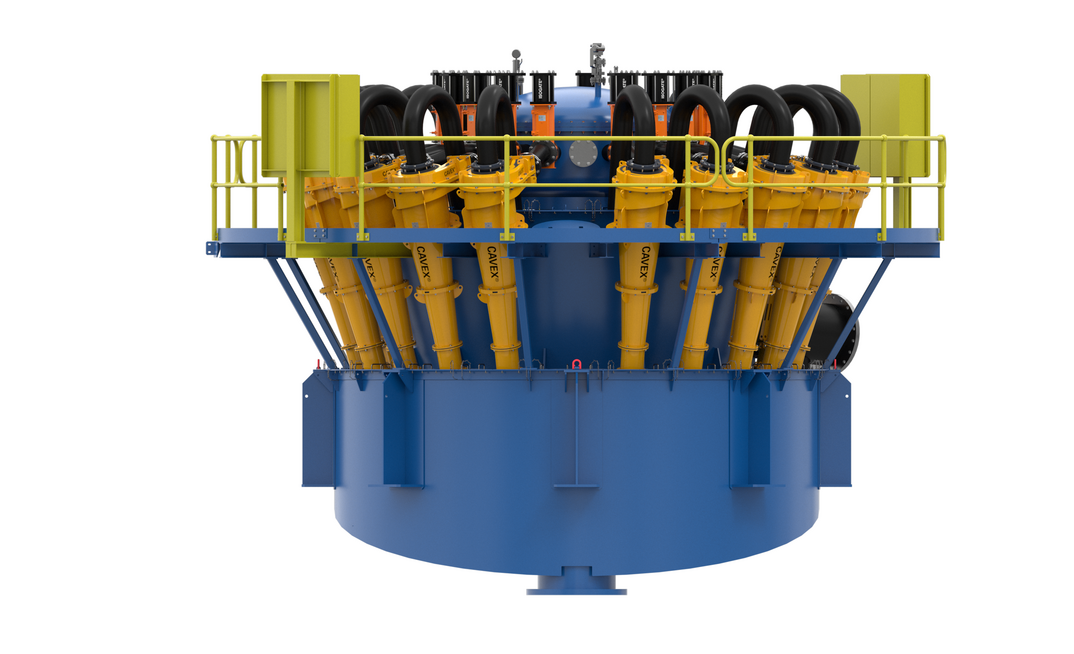Weirs innovative technology helps to optimise desliming at Vale's VGR2 plant
Vale and Weir pioneered the use of the Cavex® 2 CVD hydrocyclone in an iron ore desliming application and achieved a 9 percentage point (p.p.) gain in mass recovery, increasing it to 56%.
Vale and Weir partnered to optimise the desliming stage at Vale's Vargem Grande 2 Plant (VGR2), located near the town of Nova Lima in the state of Minas Gerais, Brazil. The average iron ore slimes losses at VGR2 corresponded to approximately 18% by weight of the total iron ore mined, totalling 1.9 million tons of iron lost every year.
In an effort to increase its mass recovery and enhance the VGR2 desliming separation performance, Vale and Weir conducted an industrial trial to compare the incumbent first-generation Cavex® CVX hydrocyclones with the latest Cavex® 2 CVD hydrocyclones. The effects of the apex and vortex were examined by combining static simulation and industrial tests.
The head-to-head trial confirmed the extra capacity of Cavex® 2 hydrocyclones,. The combination of the Cavex® 2 CVD hydrocyclone's LIG+™ inlet and feed chamber design reduced pulp turbulence and promoted an increased volumetric capacity of approximately 30%, which meant fewer operating CVD cyclones were required to achieve similar results (five versus seven).
The new hydrocyclone also presented a finer granulometric cut for the same cyclone diameter and apex/vortex configurations when compared to CVX, in addition to the greater mass separation to the underflow and, consequently, a 9 p.p gain in mass recovery.
Material and methods
To ensure a thorough comparison, Weir proposed to operate a cluster of six Cavex® 500CVX hydrocyclones and a cluster of six Cavex® 2 CVD 500 hydrocyclones under the same feed conditions in the VGR2 desliming stage.
Several comparative industrial tests, as well as the former hydrocyclone unit and sampling campaigns, were carried out to evaluate possible improvements. Samples were characterised using X-ray fluorescence, as well as particle size distribution (PSD) through gravimetry and wet sieving (0.045mm) followed by laser diffraction, and percentage of solids analysis in feed, underflow, and overflow.
Experimental industrial testing was carried out on CVX and CVD hydrocyclone clusters. During testing, three variables were manipulated: pressure (kgf/cm²), vortex and apex diameters (mm).
Tests were supported by static processing simulations. The mass flowrate, granulometry, percentage of solids and iron content constituted data input for USIM PAC, a software used for performing mass balancing, hydrocyclone model calibration and simulating operating conditions.
Cavex 2 CVD hydrocyclone
The Cavex® 2 hydrocyclone marks a new era in separation technology. Its LIG+™ advanced laminar spiral inlet together with the size of the feed chamber reduces turbulence and allows the hydrocyclone to classify up to 30% more feed slurry, while occupying the same footprint as the original Cavex® and competitor cyclones. This enhanced performance is unmatched by any known hydrocyclone in operation today.
The Cavex® 2 hydrocyclone has been trialed with mining customers in various applications across the globe. The positive results from these trials have confirmed confidence that this is the most powerful hydrocyclone on the market.
This case study is based on the facts laid out in paper "Increased Mass Recovery from Desliming at Vargem Grande 2 Using the New Model Cavex®® 2 (CVD) Hydrocyclone" presented on August 2023 at the Brazilian Metallurgy, Materials and Mining Association Week.
























